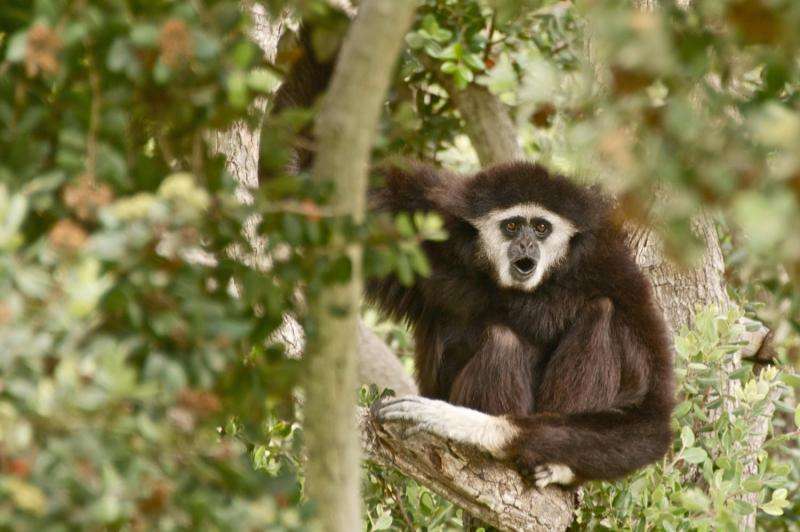Complete genome of all strains of the gibbon ape leukemia virus sequenced

Berlin-based scientists have sequenced the complete genome of all five identified strains of the gibbon ape leukemia virus (GALV). The scientists were able to prove that selection has shaped parts of the genome of this group of viruses. This is likely as a consequence of selective pressure from the host immune systems that the viruses face. GALVs are the causative agents of hematopoietic neoplasms such as leukemia and thus far have been isolated exclusively from captive primates. However GALV is used in biomedical research as vector for cancer therapy. Therefore, the sequencing of the full genomes and understanding their evolution should help to enhance their utility as viral vectors. The findings were published in the scientific magazine Journal of Virology.
The gibbon ape leukemia viruses (GALVs) are among the most important retroviral vectors due to their use in gene transfer and cancer gene therapy. Despite their biomedical significance, the complete genome of all five identified strains had remained undetermined until now and their evolutionary history unexplored.
Scientists of the Berlin Leibniz Institute for Zoo and Wildlife Research (IZW) have sequenced the complete genomes of all five identified GALV strains using target enrichment and next-generation sequencing. GALVs have to date only been isolated form captive primates, primarily gibbons, although it is strongly suspected that the natural host is a rodent or bat species. The phylogenetic analysis based on the newly generated genomic sequences has revealed that the four strains of GALV isolated from gibbons are closely related to the woolly monkey sarcoma virus, which is a GALV strain that likely originated in a gibbon host. All together the GALVs constitute a sister taxon of the well-known koala-retroviruses (KoRVs). Using an evolutionary approach, it was discovered that GALV and KoRV demonstrate selective pressure on the proteins specifically involved in the interaction with the host suggesting that the host immune system forces the viruses to adapt. Of particular note, such selective pressures were detected on the particularly pathogenic viruses, which are the GALV strains that are more oncogenic and the KoRV strains that are potentially exogenous.
GALV is part of a large group of disease-associated gammaretroviruses found in a wide variety of Australasian mammals. Viruses related to GALV are regularly found in wildlife species particularly rodents and bats. Understanding their diversity and evolution is critical to understand the origin and the spread of a major group of pathogenic viruses.
More information: Niccolò Alfano et al. Episodic Diversifying Selection Shaped the Genomes of Gibbon Ape Leukemia Virus and Related Gammaretroviruses, Journal of Virology (2016). DOI: 10.1128/JVI.02745-15
Journal information: Journal of Virology




















